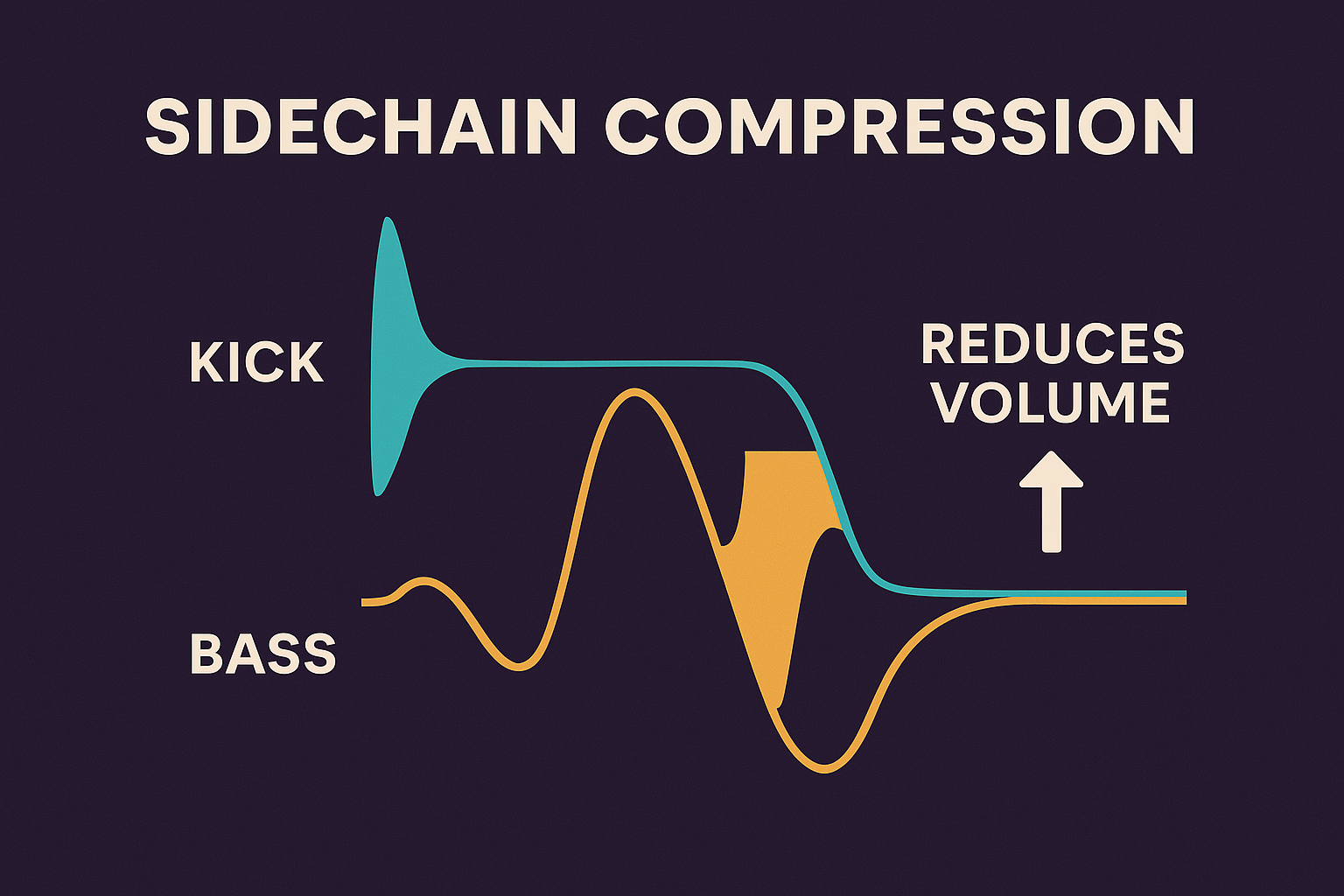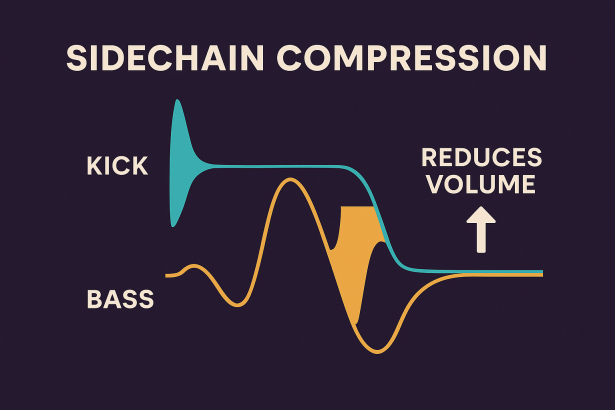Sidechain Compression in Dance Music: The Secret to a Punchy, Professional Sound
Introduction
If you’ve ever wondered how pro-level dance tracks get that signature « pumping » effect—the way the bass seems to duck under the kick and bounce back in sync with the beat—that’s sidechain compression in action. It’s one of the most iconic techniques in house, EDM, techno, and future bass, and it’s easier to master than it sounds.
In this article, we’ll break down what sidechain compression is, how to use it, and how it brings clarity and rhythm to your low end, without muddying up your mix.
What Is Sidechain Compression?
Sidechain compression is when the volume of one sound is automatically reduced (or “ducked”) in response to another sound. In dance music, this usually means lowering the volume of the bass or pads whenever the kick hits, so that the kick can cut through clearly.
This creates:
- A tighter, cleaner low end
- A rhythmic “pumping” feel synced to the kick
- More energy and groove in your mix
How Sidechain Compression Works
A compressor normally listens to the sound it affects. But with sidechaining, the compressor listens to an external trigger (sidechain input) and reacts based on that signal.
In dance music, it works like this:
- Put a compressor on the bass track (or pad/synth).
- Route the kick drum to the compressor’s sidechain input.
- When the kick hits, the compressor lowers the volume of the bass—then brings it back up.
The result? Space for your kick drum to punch through the mix, every time.
Key Compressor Settings for Sidechaining
- Threshold – Controls when the compression starts. Set it so the compressor only activates when the kick hits.
- Ratio – Controls how much compression is applied. Use high ratios (e.g., 5:1 to 10:1) for noticeable pumping.
- Attack – Set to 0–10ms for fast response (to catch the transient of the kick).
- Release – Set to 100–300ms to create that rhythmic « suck and swell » pumping. Adjust to taste.
- Knee – Soft knee = smoother ducking. Hard knee = sharper, punchier duck.
Creative Uses of Sidechain Compression in Dance Music
✅ Bass Ducking – Classic kick + bass separation technique
✅ Pad Breathing – Make pads or ambient textures pulse with the beat
✅ Vocal FX – Duck reverb/delay tails under the dry vocal
✅ Rhythmic Movement – Apply to synths or white noise for dynamic grooves
✅ Subtle Groove – Even slight ducking can tighten a mix without being obvious

Best Plugins for Sidechain Compression
Free Options
- TAL-Filter-2 – Great for rhythmic sidechaining without routing
https://tal-software.com/products/tal-filter - MeldaProduction MCompressor – Clean and versatile with sidechain support
https://www.meldaproduction.com/MCompressor - ReaComp (ReaPlugs) – Flexible and lightweight with sidechain input
https://www.reaper.fm/reaplugs/
Paid Plugins
- Kickstart 2 by Nicky Romero – Fast, visual sidechain with preset rhythms
https://www.kickstart-plugin.com/ - ShaperBox by Cableguys – Full control over volume, filter, width + visuals
https://www.cableguys.com/shaperbox.html - FabFilter Pro-C 2 – Transparent, precise, and deeply customizable
https://www.fabfilter.com/products/pro-c-2-compressor-plug-in
Tips for Clean and Musical Sidechaining
- Use ghost kicks (silent kicks) as a trigger if you don’t want the actual kick sound to play.
- Combine compression and volume automation for total control.
- Use high-pass filtering on the detector to avoid over-compressing from sub rumble.
- Trust your ears—don’t overdo it unless the genre demands extreme pumping (e.g., future house).
Conclusion
Sidechain compression is a signature sound in modern dance music—and mastering it is key to producing tight, energetic, and club-ready tracks. Whether you’re using it for clarity, groove, or that classic EDM pump, the technique is simple to implement and endlessly versatile.
Load up your favorite sidechain plugin, route your kick, and start shaping your sound to move with the beat. Your mix—and your dancefloor—will thank you.
![]()














